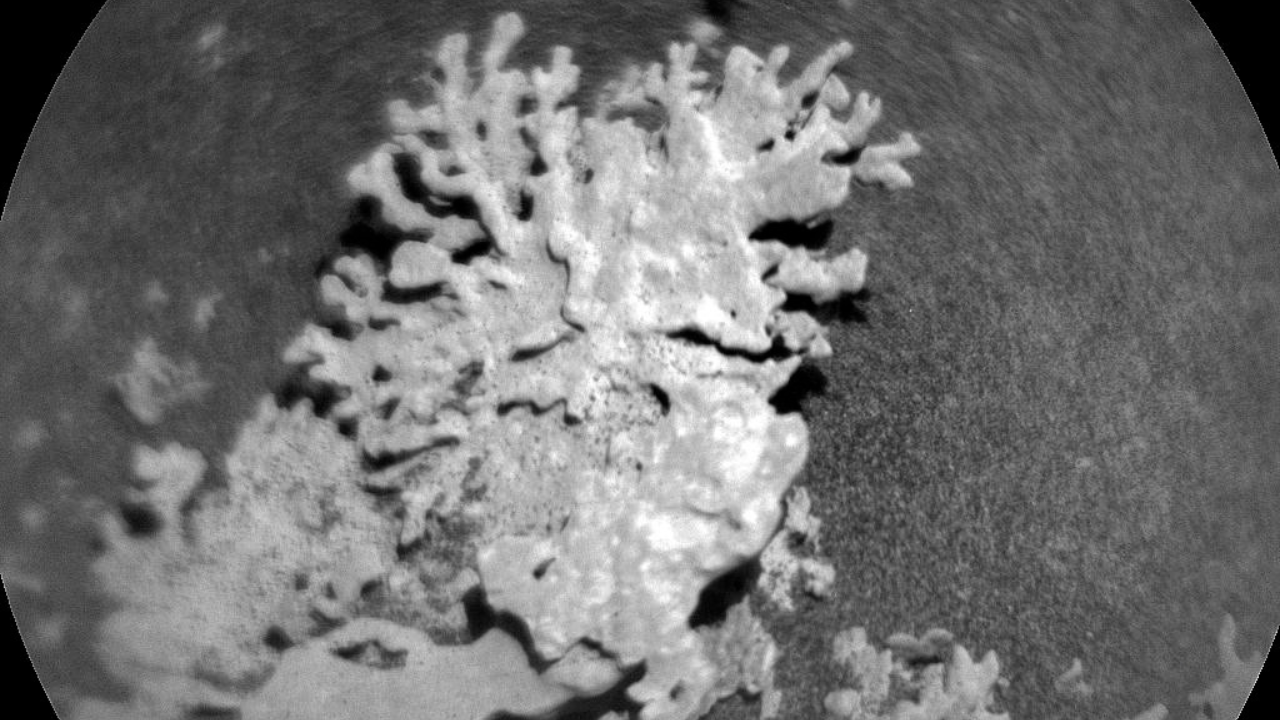🪸 Surprising coral-like formation discovered on Mars
Follow us on Google News (click on ☆)
Located in Gale Crater, this light-colored rock measures about 1 inch (2.5 cm) wide. Its branched appearance results from millions of years of wind erosion, creating patterns reminiscent of Earth's corals. Scientists attribute this shape to the combined action of ancient water and sand-laden winds.

A wind-eroded Martian rock resembling coral.
Credit: NASA Jet Propulsion Laboratory
Minerals dissolved in Martian water played a key role in forming these structures. They seeped into rock fractures, creating solid veins that resisted erosion. This process, similar to that observed on Earth, provides insight into Mars' past conditions.
Curiosity has discovered other unusual rock formations like 'Paposo' and a flower-shaped object. These findings enhance our understanding of Martian geological diversity and the processes that shaped it.
Since landing in 2012, Curiosity has traveled over 22 miles (35 km) across Gale Crater. Its mission aims to identify traces of past habitability by analyzing rock and soil composition. The rover's discoveries, including carbon chains and evidence of a carbon cycle, suggest Mars may have hosted conditions suitable for life.
How did water shape Mars?
Water played a central role in forming Mars' current landscape. Billions of years ago, rivers and lakes covered its surface, carving valleys and depositing sediments.
Minerals dissolved in this water permeated rocks, creating structures like the veins observed by Curiosity. These geochemical processes resemble those forming stalactites and stalagmites in Earth's caves. Wind erosion then took over, sculpting rocks to reveal these internal structures.
Studying these formations helps scientists reconstruct past environmental conditions, crucial for understanding the planet's potential habitability.
What is the Martian carbon cycle?
Mars' carbon cycle involves carbon exchange between the atmosphere, surface, and planet's interior. Unlike Earth, Mars has no known life influencing this cycle.
Curiosity's discoveries, like carbon chains in rocks, suggest chemical or biological processes may have existed. These organic molecules could originate from geochemical reactions or past microbial life.
Studying these signs helps scientists better understand carbon circulation on Mars. This could reveal clues about the evolution of its atmosphere and climate.
While evidence remains indirect, it opens avenues for extraterrestrial life research and understanding rocky planets.